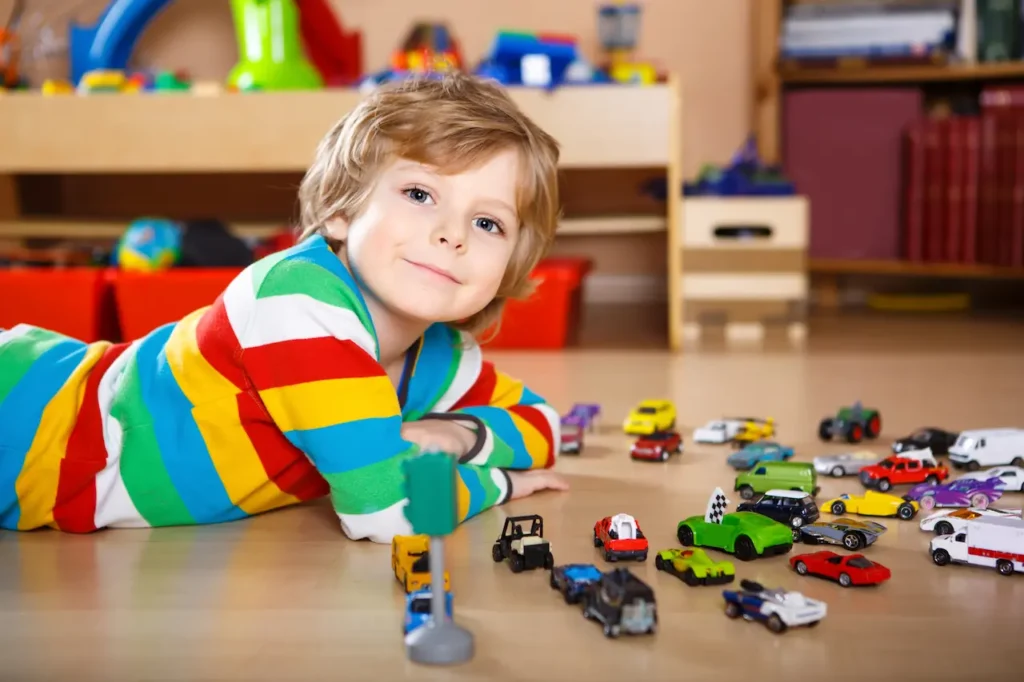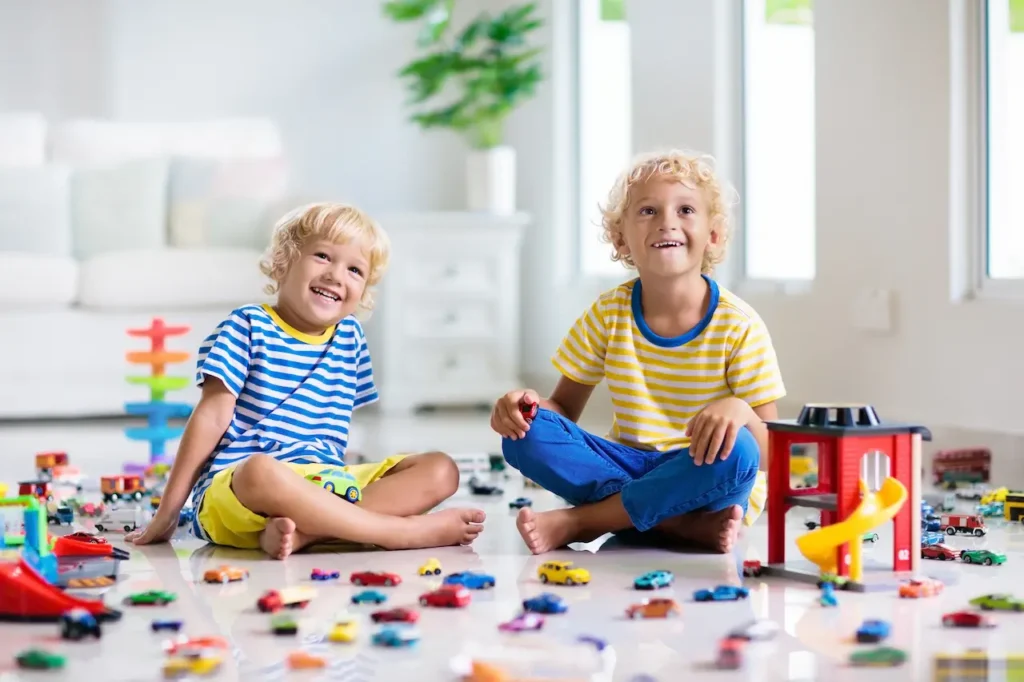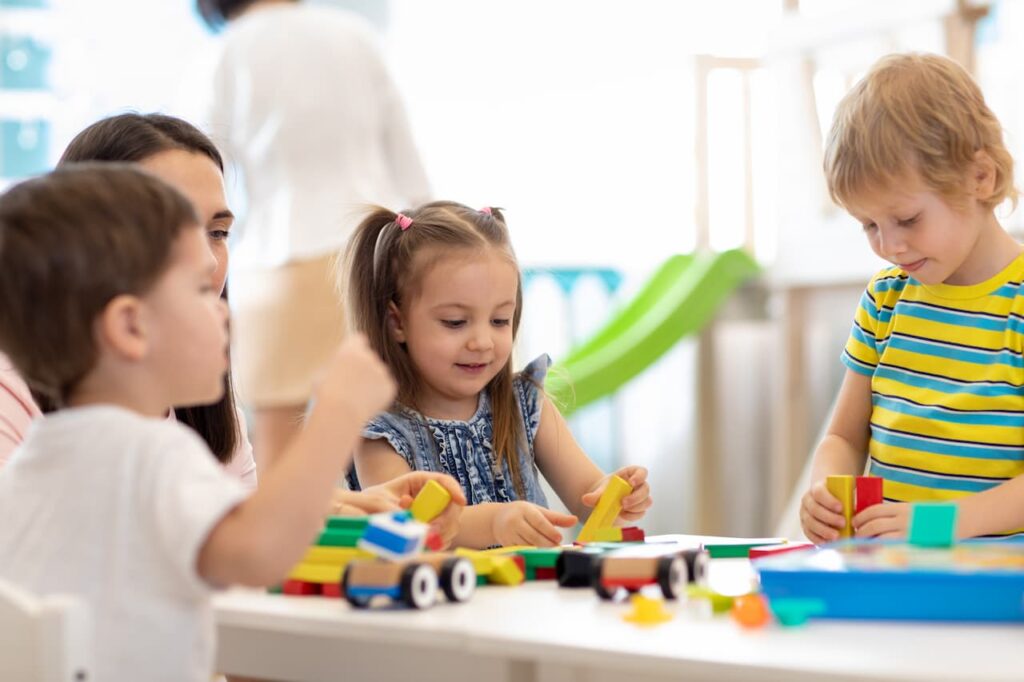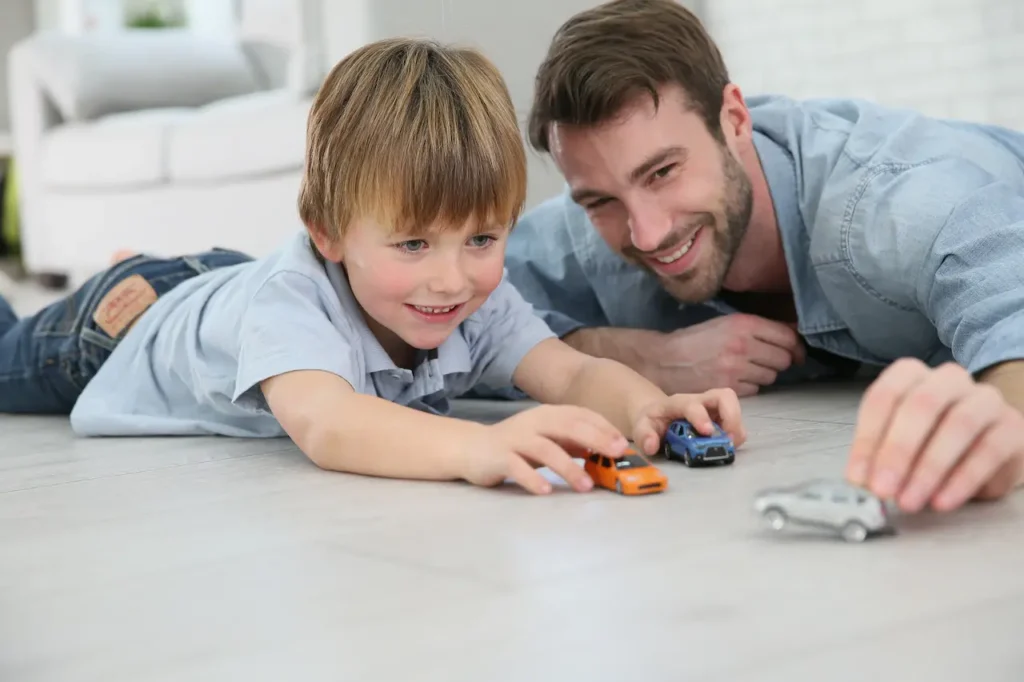Gender Differences
You would be correct if you said that boys love cars and trucks more than girls. Caroline explains: “When you observe children playing and giving them different toys, it is common to find that boys prefer cars, trucks, or other moving things. Also, they enjoy toys that require physical interaction. She goes on to say that, “children of different age groups play differently but this pattern is common across the board.”
Nature or Nurture
Do stereotypes influence the toys children choose to use? Caroline says it isn’t always the case. When children play alone, they are more likely to be interested in what they enjoy. Other factors become more important as children grow. Caroline says as children grow older, they’ll begin to play with each other. “If a child wants to play with a truck but her friends want to play rabbits or whatever else, she’ll go play with that toy.”
The Science Behind the Car Obsession
Why cars? A possible reason could be related to cognitive development. According to Piaget’s theory of cognitive growth, toddlers are moving from the sensorimotor (birth-to-2 years) stage into the preoperational (ages 2-7) stage around the age of 2.

Sensorimotor development is a stage where children explore the world by using their senses and interacting physically with objects. This is why cars are the perfect toy for this stage. They’re cause-and-effect toys — you push them and they move. Toddlers can experiment with the effects of their actions, such as rolling a vehicle across the floor or launching a ramp.
When toddlers reach the preoperational stage they start to develop symbol representation. This means they can use objects as a way to represent other things. They might pretend that their car is zooming along an imaginary motorway or flying like an airplane. It’s the start of pretend play. Their little cars are transformed into vehicles that help them expand their imaginations.
Evolutionary Theory
Caroline says that researchers are still looking at theories about the way children play and their preferred toys, but evolution could also be a factor. Men and boys were the hunter-gatherers in ancient times and they had to understand tools and three-dimensional space. Women and girls were responsible for their families and keeping their communities together. Caroline replies, “That is one theory.”
She says that some kids might put cars and trucks into the same category as favorite living things. Imagine a truck’s large headlights as eyes. She claims that it has agency because it is moving. It may surprise you to learn that children view trucks in the same light as they regard dinosaurs and animals. The trucks are moving objects that do some interesting things.
Father and son playing with toy cars
Here Are Some Reasons Why Little Boys Love Toy Trucks and Cars
What’s the reason behind their fascination? There are many reasons that these toys appeal to young minds, from evolutionary factors to developmental phases. We’ll examine some of the factors that influence the popularity of cars and trucks among boys, and why they are at the tops of their wish list.
First, They’re Familiar and Fun!
Toy vehicles are a miniature version of familiar things. This is one of the main reasons why kids love them. Kids are exposed to cars, trucks and other vehicles from an early age. They see them on the road, in movies, and on TV, but also at home. Early exposure to vehicles can help children learn about the world and make them more attached to their toys.
Benefits
The connection kids have with their toys vehicles allows them to explore the world from the comforts of their playroom. Kids can learn about how to operate a fire engine or telehandler as they zoom across imaginary landscapes and cities. They will also start to understand basic concepts such as spatial awareness and cause and effect relationships.
Second, They are Fast and Exciting!
You may not be surprised to learn that kids enjoy toys with moving parts, flashing lights, and sounds. Toy vehicles offer children a thrilling sensory experience. Playing with fast-paced toys, whether it’s a zooming car or a roaring truck, stimulates the senses of children and increases their excitement.
Benefits
As they race, jump, and even crash toy cars, they create a lot of sensory input. Toy cars provide sensory input in the form of sounds, images, and textures. This helps to enhance young children’s development. Interacting with these toys helps children improve their tactile sensitivity and auditory and visual processing skills, which are important for language and fine motor skill growth. It’s pretty cool!
Third, They’re Fascinating.
Toy vehicles spark kids’ curiosity! It’s hard to not wonder about the real-life counterparts of these toys, with their intricate designs and moving parts. Toy cars and trucks are a great way to bring pretend play to life for children.
Benefits
Playing with toy cars can inspire a child’s desire to learn about their mechanics. Toy vehicles can teach kids a lot, from the basics like cause-and effect to more complex STEM principles such as basic engineering concepts, problem-solving and spatial reasoning.

Playing with Cars has Many Educational Benefits.
What is the best thing about toddlers’ fascination with cars? It’s more than just fun. Toy vehicles are a great way to develop a variety of skills.
Problem-Solving: Building a ramp, creating crash situations, and experimenting on different surfaces teach toddlers basic physics concepts like gravity, friction, and acceleration
Motor skills: Pushing or pulling cars strengthen fine and gross motor abilities. It is good for your muscles to chase a car that has run away or to zoom a vehicle in the room.
Storytelling and Imagination: The possibilities for pretend play with cars are endless. Your child will learn to expand their imagination and create stories by zooming the car to the shop or pretending that it is a rocker.
Language development: Toddlers use prepositions such as “over,” “under,” or “through” when playing with cars. They also begin to understand concepts like stop/go, and fast/slow.
Not All Gender is Equal.
She explains that there are many factors which influence a child’s choice of toy. “It’s not just trucks and toys,” she says. This age group can be obsessed with bugs, beetles and other insects. Vacuums can also become a fascination.
We don’t understand why they can be obsessed by anything. We don’t know why one child is obsessed with a turtle and another with a firetruck. This phenomenon is referred to by researchers as ‘extremely intense interests’. Around a third preschoolers show intensely focused interests, which begin at age 18 months.

Little Toy Hackers
Caroline explains that children play differently and “hack” toys to suit their style of play. They don’t believe in the assumptions adults have about toys.
I’ve seen boys wrap cars in blankets, and then rock them from side to side. She explains that she has seen girls using dolls to make trucks.
As adults, we categorize these toys. Children are not as categorical, I think. You don’t have to use a doll to show care and nurture, and you do not need to use a construction kit to learn how solid objects interact.
Conclusion
As a parent, I understand how important it is to provide activities that will engage your child while also supporting their development.
It’s not unusual for toddlers to spend hours playing in the car. This is a crucial part of their physical and cognitive development. It’s also an activity that encourages curiosity, promotes learning, and keeps children entertained.
Next time you step on a toy car, remember that they are not only toys. These toys are tools for imagination, learning, and growth.




